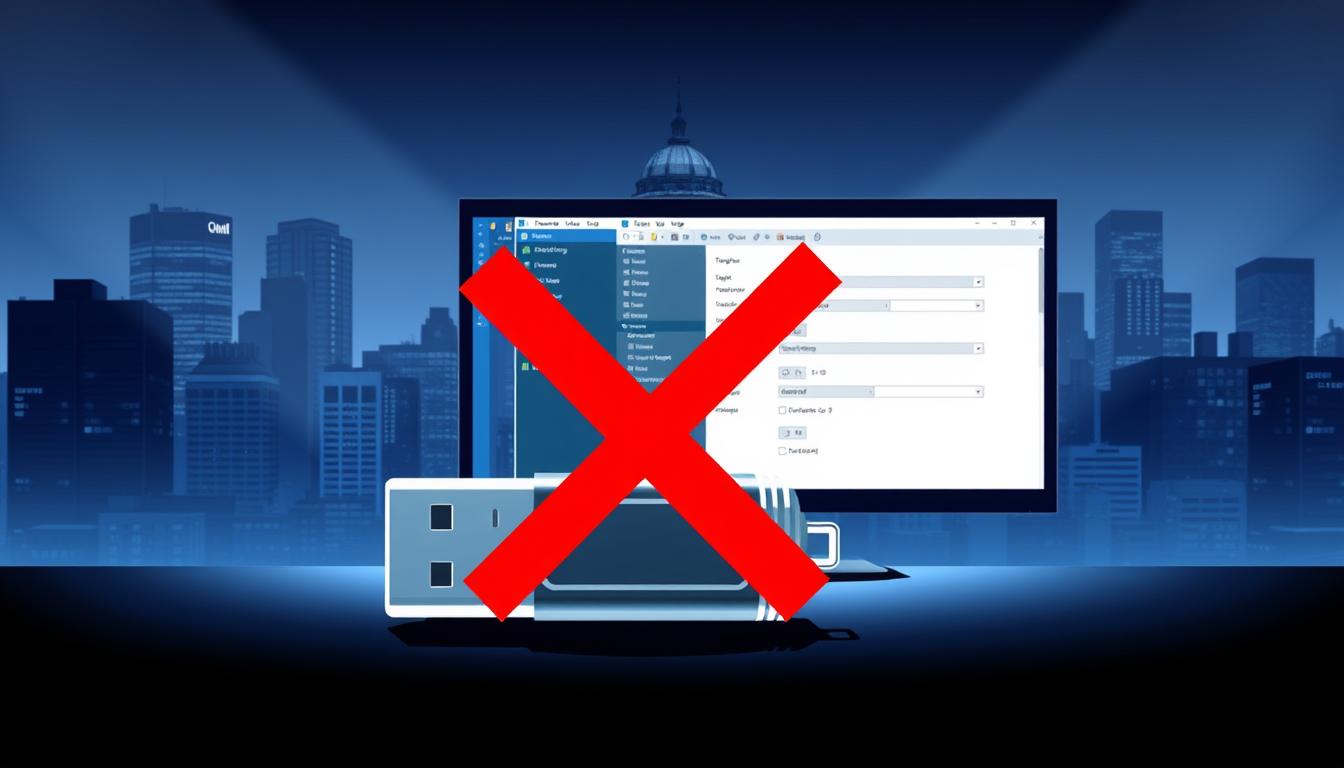Cyber Security
Rochester Ransomware-Canary Backup Test: prove you can restore in 30 minutes.
IBM’s 2024 report shows that average ransomware recovery takes days, not hours. Yet, many claim they can restore data in just 30 minutes to insurers. For businesses in Monroe County and Upstate New York, this gap is both risky and costly. Our goal is to prove that a 30-minute restore is possible, reliable, and can…
Read MoreRochester USB Policy Rollout: block bad sticks, allow the tools you need.
More than 30% of industrial incidents with malware come from removable media, studies show. Our policy blocks harmful USBs while allowing needed tools. It’s a simple, effective way to manage endpoints without slowing work. This policy is part of a bigger plan for managing endpoints. It matches the Avangrid Networks Operational Smart Grids Cyber Assurance…
Read MoreEndpoint Health Score for Buffalo fleets: EDR, patches, and USB policy in one pass.
57% of endpoint breaches start with a missing patch or a misconfigured agent. Yet, most audits run these checks in separate tools and at different times. This gap is costly for teams that need fast, clear answers about endpoint device protection across busy sites in Buffalo. We introduce a single-pass Endpoint Health Score. It fuses…
Read MoreCredential Exposure Sweep for Niagara Falls domains: fix reused and leaked logins fast.
In 2016, the Canadian Nuclear Safety Commission did 1,452 inspections. They issued graded enforcement, making compliance up to 97.5% in management systems. This same approach can help us tackle reused and leaked logins quickly. A fast, evidence-based sweep across Niagara Falls domains reduces risk before it becomes a breach. We use the CNSC Safety and…
Read MoreIdentity Threat Detection Baseline (ITDR) for Niagara Falls Tenants
46% of data breaches happen because of stolen or weak passwords, says Verizon’s Data Breach Investigations Report. For those near the Falls, this is a real concern. It’s about keeping people, payments, and property safe. An ITDR baseline offers a solid starting point and a clear plan. It matches identity controls with constant monitoring. This…
Read MoreBuffalo MFA Coverage Gap Finder: 100% enforcement across apps.
Verizon’s Data Breach Investigations Report reveals a big problem: stolen credentials cause most breaches. Yet, many companies ignore multi-factor authentication on key apps. In Buffalo, this issue grows as teams quickly adopt new technologies. Our Buffalo MFA Coverage Gap Finder aims for 100% enforcement across all apps. We want to ensure no login, legacy tool,…
Read MoreRochester’s Night-Shift Wi-Fi Scan: spectrum, roaming, and quiet channels.
After midnight, the noise in busy areas drops by over 60%. This creates “quiet channels” that daytime surveys miss. For Rochester business WiFi, this is a golden opportunity. It’s when we find clear paths for roaming and adjust power without disrupting operations. This method is inspired by public policy. Letters to Senator Ron Wyden highlighted…
Read MoreBuffalo’s Wi-Fi Heatmap DIY Kit for Brick, Steel, and Cold Rooms.
A single brick wall can cut Wi-Fi signal by over 50%. Steel racks can also increase dead zones. In Buffalo’s busy warehouses and cold rooms, this means slow scans and missed picks. It leads to costly delays. That’s where Wi-Fi heat map can help Buffalo’s businesses. Our kit is built for the United States market.…
Read MoreFOIL-Safe Records: Email Retention for WNY Municipalities.
A single midsize town can send over a million emails a year. Yet, one FOIL request can search every inbox and even personal phones. This makes routine messages public records. For Western New York municipalities, having strict email retention policies is key. This article helps turn risk into order. We cover practical steps for town…
Read MoreCopier Fleet Attacks: Firmware, Hard Drives, and Wipe Policies.
Seventy-five percent of organizations have at least one unsecured printer or copier on their network, according to Quocirca. This blind spot is now a gateway. Modern MFPs scan, email, store, and forward data, acting like small servers. This is critical for copier fleet security in Buffalo. Devices keep images on internal hard drives and caches.…
Read More









